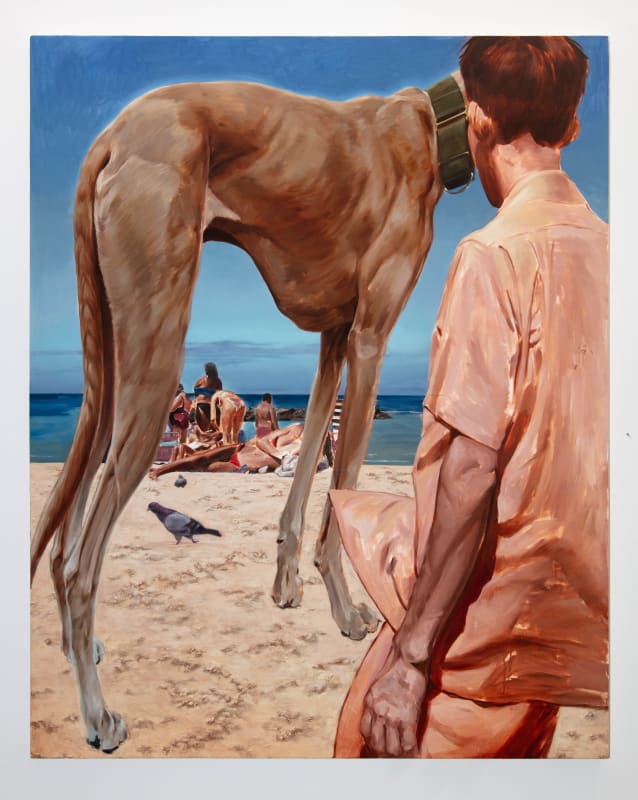《观看之道》是一场群展,其标题取自伯格的这篇开创性论文,论文挑战了图像被框定、消费和理解的方式。展览汇集了肖恩·慧辅·伯克利 (Shane Keisuke Berkery)、爱德华·琼斯(Edward Jones)、Gus Monday (格斯·蒙迪) 和 奥列克西·谢尔巴克(Oleksii Shcherbak) 的创作,探讨当代绘画与图像创作如何持续处理“感知的政治”。
约翰·伯格(John Berger)的《观看之道》(1972)挑战了关于艺术和视觉文化的传统观念,他指出我们的感知始终受到语境、权力和意识形态的塑造。他认为,艺术作品的再现会改变其意义,因为作品的比例、环境与框架都会改变我们体验它们的方式。
通过将文字性文章与纯图像章节并置,伯格展示了“观看”从来不是中立的——它总是被历史、文化与权力结构所影响。
《观看之道》是一场群展,其标题取自伯格的这篇开创性论文,论文挑战了图像被框定、消费和理解的方式。展览汇集了肖恩·慧辅·伯克利 (Shane Keisuke Berkery)、爱德华·琼斯(Edward Jones)、Gus Monday (格斯·蒙迪) 和 奥列克西·谢尔巴克(Oleksii Shcherbak) 的创作,探讨当代绘画与图像创作如何持续处理“感知的政治”。每位艺术家都以独特方式提出质问:观看意味着什么——无论是通过层叠的抹除过程、对个人与文化记忆的重新框定,还是对既有视觉规范的打破。他们的作品共同动摇了“观看是被动行为”的观念,相反提出:视觉始终是被建构的、主观的,并嵌入历史语境之中。通过此举,《观看之道》为观众开启了一个空间,在这里,他们不仅是观察者,更被邀请去反思塑造当下图像体验与解读的条件。
这些绘画探索了“可见”与“不可见”之间的张力。作品经由缓慢的层叠、重塑与抹除的过程构建而成,抗拒轻易被识别。光线在画面表面破碎,生成既非实体、亦非纯粹幻象的空间,而是介于两者之间的某种存在。细腻而柔和的色调使作品脱离了熟悉的时间与地点。它们并非提供清晰答案,而是有意遮蔽,要求观者与之长时间相处,并接受其中的不确定性。许多作品起源于照片、拼贴或个人档案,但它们超越了单纯的记录,而成为记忆、内省与想象状态的容器——在其中,有机与人工处于微妙的平衡之中。
这些绘画不提供结论,而是引导思考。它们提醒我们:我们所处的空间从不真正中立,而是被历史、政治与文化所塑造;而凝视与细看,本身就是一种发现的过程。
——安杰利基·金·佩尔费蒂(Angeliki Kim Perfetti)
